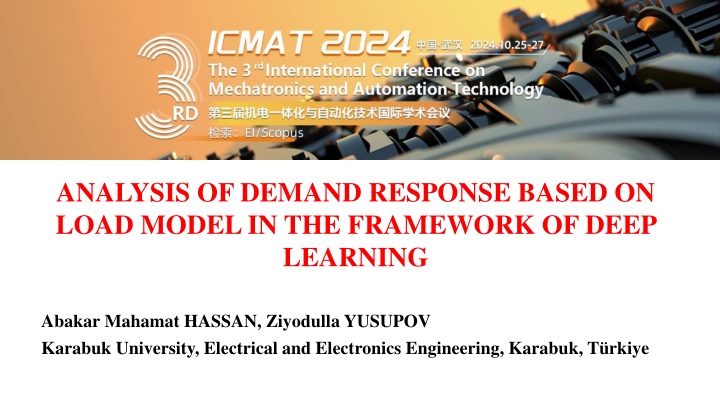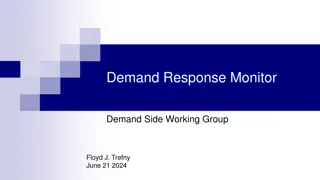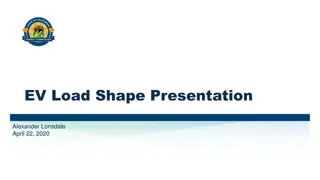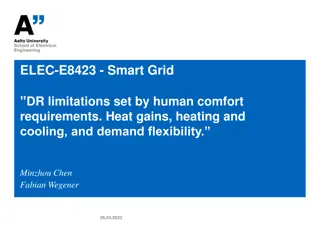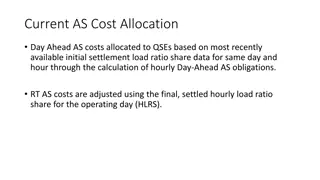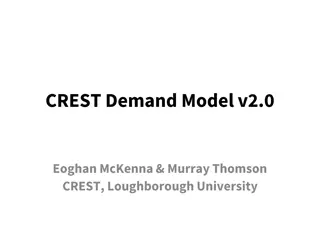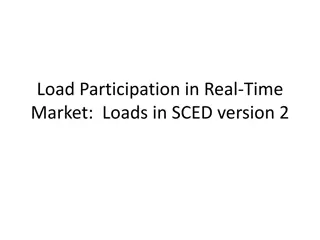Analysis of Demand Response Based on Load Model: Deep Learning Framework
In this research, the study explores demand response through a deep learning framework, focusing on the impacts of load model variations. It delves into the methodologies, program classifications, challenges, advantages, and disadvantages of demand response in the context of smart grid technology. The paper discusses the utilization of deep learning algorithms to enhance demand response architectures and concludes with a comprehensive outlook on the subject.
Download Presentation

Please find below an Image/Link to download the presentation.
The content on the website is provided AS IS for your information and personal use only. It may not be sold, licensed, or shared on other websites without obtaining consent from the author.If you encounter any issues during the download, it is possible that the publisher has removed the file from their server.
You are allowed to download the files provided on this website for personal or commercial use, subject to the condition that they are used lawfully. All files are the property of their respective owners.
The content on the website is provided AS IS for your information and personal use only. It may not be sold, licensed, or shared on other websites without obtaining consent from the author.
E N D
Presentation Transcript
ANALYSIS OF DEMAND RESPONSE BASED ON LOAD MODEL IN THE FRAMEWORK OF DEEP LEARNING Abakar Mahamat HASSAN, Ziyodulla YUSUPOV Karabuk University, Electrical and Electronics Engineering, Karabuk, T rkiye
CONTENTS Introduction Methodology DR programs classifications Current Challenges in DR Advantages and disadvantages Deep Learning Algorithms in Demand Demand ResponseArchitecture Conclusion Q&R and thanks 1/13
Introduction As smart grid technology continues to develop, demand response (DR) stands out as a transformative and adaptive approach in Microgrid, as known in Microgrid (PV and Wind) energy production depends on the weather, so the load demand fluctuates every hour, and to keep the customers actively participate in demand response there are two types of programs that can be used in Demand Response, these programs are Price-based DR and Incentive-based . 2/13
Methodology Through a systematic methodology encompassing difference research from a difference Engineering conferences papers, journals papers, and etc, this paper was prepared to throught these researches was clarified that demand response combinations are formed from technological, behavioural, and policy-driven approaches to curtail electricity usage during peak demand times. 3/13
DR programs classifications Demand side management Customer induced Utility induced Energy conservation DR programs Price based Incentive based 4/13 Real time pricing Critical peak pricing Direct load control Interruptible EDRP Time of Use Market based
Current Challenges in DR The challenges bellow considered with a real-time demand response program including Time delays Uncertainties Characterization errors Multiple timescales And nonlinearity 5/13
Advantages and disadvantages I. Grid Integration and Stabilization Increase power system flexibility Provided flexibility can be used to meet the fluctuations of renewable generation Reducing the system cost and increasing economic efficiency User Flexibility and Control Cost Savings Environmental Benefits Advantages: 6/13
Cont. II. Disadvantages Unriliable participation Complexity Grid dependency Data Privacy and Security 7/13
Deep Learning Algorithms in Demand Response Recurrent Neural Networks (RNNs) and Long Short-Term Memory (LSTMs): networks are effective in modelling time-series data which is crucial in predicting energy consumption patterns Convolutional Neural Networks (CNNs): can be used to identify patterns in energy usage data, contributing to the detection of peak demand periods and the formulation of corresponding DR strategies Reinforcement Learning: particularly deep reinforcement learning algorithms learn optimal policies to balance energy demand and adapting to changing grid conditions and user behaviour 8/13
Demand ResponseArchitecture These figure shows the architecture of Demand Response in Microgrid and Deep Learning. Microgrid DR Architecture 9/13
Cont. Deep Learning DR Architecture 10/13
Conclusion The exploration of deep learning algorithms and advanced technologies in the realm of demand response has illustrated a significant potential to revolutionize how energy systems are managed and optimized. It signifies a crucial advancement towards establishing a more intelligent, environmentally friendly, and robust energy infrastructure. byusing the deep learning in the field of electricity and especially in DR, in the future development can make a significant change in Advanced Grid Resilience with AI, Personalized Demand Response and Regulatory Evolution. 11/13
Q&R and thanks Electricity is the best discovery and smart grid is the best chose to use it. 12/13
